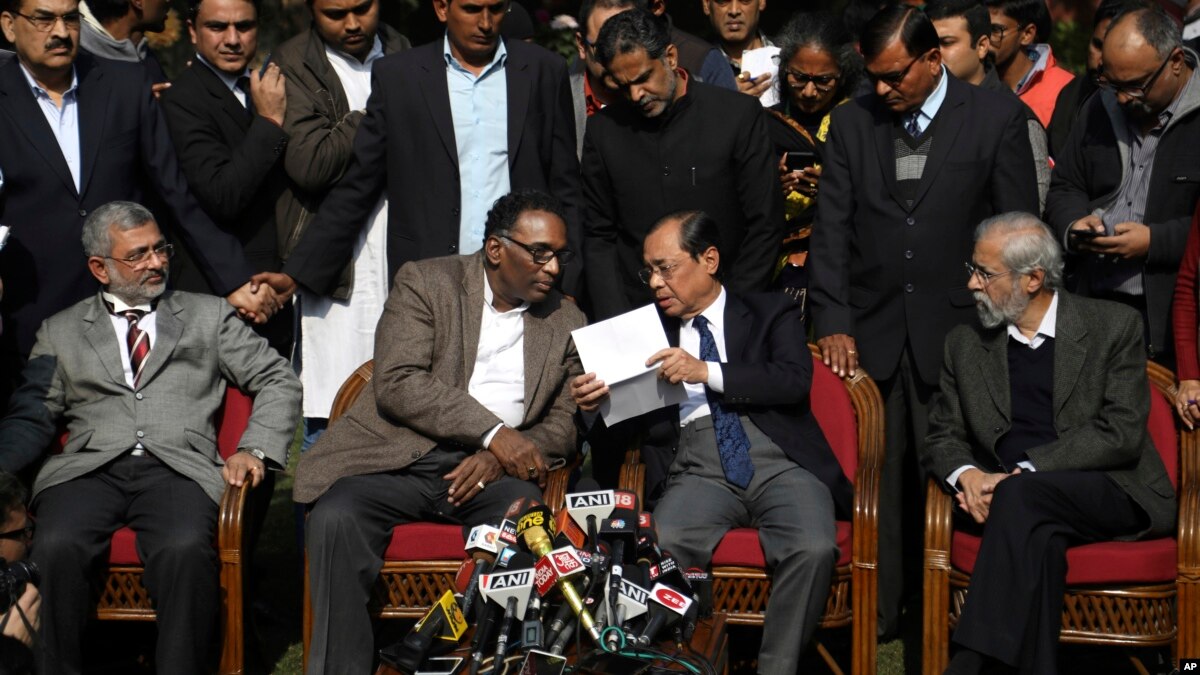
One of India’s most respected and powerful institutions, the Supreme Court, is never far away from the news, usually for handing out progressive judgments. But in the past week it has grabbed headlines for all the wrong reasons.
The top court’s credibility took a serious jolt after four of its senior most judges took the unprecedented step of issuing a grim public warning that its functioning posed a threat to democracy.
At the first ever news conference to be addressed by judges of the top court, they said last week that the chief justice was assigning cases with “far-reaching consequences for the nation and the institution” selectively and with no rational basis.
The words sent shockwaves through the nation where most people regard the Supreme Court as largely independent, clean and a frontline institution in guarding its raucous democracy.
It was not explicitly stated, but the subtext was that politically sensitive cases were being assigned to certain benches to influence their outcome.
The immediate trigger for the public outburst by the judges is a petition that calls for an investigation in the 2014 death of a lower court judge, B.M. Loya, while he was hearing a case that accused the president of the ruling Bharatiya Janata Party, Amit Shah, of ordering a murder. Shah has since been acquitted of those charges. The four judges apparently wanted the case to be heard by a bench other than the one to which it has been assigned.
“The reasons underlying all of this is the struggle in trying to ensure that courts don’t get politicized,” said Shylashri Shankar, the author of a book on the Supreme Court. She said that with many of the state institutions such as the bureaucracy and police already compromised, “there is a fear that the judiciary will not be able to withstand the political might of single party majority government.” She was referring to the prime Minister’s Hindu nationalist Bharatiya Janata Party.
Last November the court also witnessed open differences between senior judges over a petition seeking an independent investigation into corruption charges involving a blacklisted medical college and a retired judge. The case spotlighted concerns of corruption in the higher judiciary.
The focus is now on how the top court will address the issues raised by the judges, who include one next in line to be chief justice.
While the opposition Congress Party has backed the four judges, the government has refused to comment, suggesting that it is up to the court to settle the rift within its top ranks.
Legal researchers say the rift exposes the deep distrust in the top echelons of the judiciary.
“At the moment far too much discretion is rested in the chief justice of India and there is not enough public accountability or transparency in the way the office functions, which is what has led to tensions boiling over,” according to Alok Prasanna Kumar, a fellow at the Vidhi Center for Legal policy.
It has long been known that not all is well with India’s justice system – the courts are clogged with some 25 million cases, it takes years to settle cases and lower court judges have often been accused of corruption.
But the supreme court has largely retained its aura and won praise for pushing the country in a liberal direction. In recent months for example it has handed out progressive judgments such as abolishing instant divorce in the Muslim community, declared privacy to be a fundamental right and defended freedom of expression as it ordered state governments to lift a ban on a film hardline Hindu groups find objectionable.
There also have been controversial orders such as banning liquor shops along highways and a 2016 ruling (now reversed) making it mandatory to play the national anthem at cinema halls.
Efforts in the past week have focused on healing the rift within the judiciary, with some meetings taking place between the chief justice and the dissenting judges who said they only went public when he failed to heed their request for remedial measures.
Pointing out that the judges had put their careers and reputations on the line to expose serious problems, Prasanna said setting the house in order will have to be a priority for the supreme court. “These are some warning signs which tells us that we are our not functioning as the institution is supposed to function, our own credibility is at stake, if they accept that a huge amount of gain can be made,” he said.
So far it is unclear if the supreme court is moving in that direction. But until then, it will remain under intense public scrutiny as judge Jasti Chelameswar’s words continue to be played out by the media. “All four of us are convinced that unless this institution is preserved and it maintains its equanimity, the democracy will not survive in this country or any country.”
Read More India’s Top Court Faces Credibility Crisis : http://ift.tt/2mQipkn
No comments:
Post a Comment